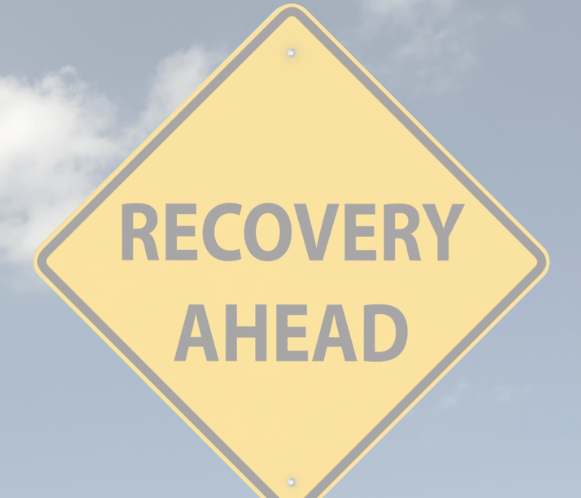
- 1 Comment
- PRMA Plastic Surgery
If you’re preparing for DIEP flap breast reconstruction surgery, knowing what to expect during recovery can help ease anxiety and empower you to prepare for the journey ahead. At PRMA, we utilize the Enhanced Recovery After Surgery (ERAS) protocol to support faster, more comfortable healing for our patients.
Recovery from DIEP flap surgery is a gradual process that unfolds over approximately six weeks. Each week brings new milestones as your body heals and you regain strength. This comprehensive guide breaks down what you can expect during each phase of your DIEP flap recovery timeline, helping you feel confident and prepared for every step.
What to Expect After DIEP Flap Surgery
If you are preparing for DIEP flap breast reconstruction surgery, you may be wondering what to expect during the recovery period. At PRMA, we utilize the Enhanced Recovery After Surgery (ERAS) protocol that helps our patients recover faster and more comfortably. Our ERAS protocol has been designed specifically to:
- Reduce pain and discomfort through proactive pain management
- Minimize complications with evidence-based care protocols
- Accelerate healing through early mobilization and optimized nutrition
- Support your emotional well-being with comprehensive patient education
Here is a six-week breakdown of what you can expect during your recovery:
Week 1 – Hospital Recovery + Return Home
During the first few days after surgery, you will be in the hospital recovering. You will have surgical drains, which the hospital nurse will help you measure outputs and strip. With our ERAS protocol, you can expect to be up walking the morning after surgery at the latest.
By post-operative day two or three, most patients are ready to be discharged and return home. You should gradually increase your walking time and distance, and a strong support system is crucial. Patients traveling from out of state are seen in the office within a few days of discharge from the hospital to be cleared for travel back home a week or so after their surgery.
Week 1 Highlights:
- Hospital stay: 2-3 days typically
- Key milestone: Walking within 24 hours of surgery
- Drain management: Monitored by nurses, then managed at home
- Travel clearance: Out-of-town patients cleared for travel around 1 week post-op
Focus on gradually increasing your walking time and distance. A strong support system is essential during this phase as you adjust to managing drains and begin your healing journey.
Week 2 – Early Healing & Movement at Home
For local patients, a follow-up appointment with your PRMA nurse is scheduled within two weeks after surgery. It is important to continue increasing your cardio endurance, but rest is still important while your body is healing. By the end of the second week, you can switch from the surgical bra and abdominal binder to a wireless bra and panty girdle. Patients who are not taking any narcotics during the day are free to drive based on their comfort level.
Week 2 Highlights:
- Follow-up visit: Within 10-14 days for local patients
- Garment transition: Switch to wireless bra and compression underwear
- Driving eligibility: Only if off daytime narcotics and comfortable
This week marks an important transition as you become more independent in your daily care while your body continues its healing process.
Week 3 – Back to Light Activity
You should feel capable of doing more things on your own now, including being more social with your friends if you feel up to it. Most at-home medications can be resumed if they haven’t been restarted already, but please clear this with your physician first. Any remaining surgical drains are usually removed, and patients with low-impact desk jobs can return to work at this time.
Week 3 Milestones:
- Surgical drains typically removed
- Return to light desk work possible
- Increased independence with daily activities
- Resume most home medications (with physician approval)
Continue your walking routine and add gentle stretching as you feel comfortable.
|
🌿 Tip Box: 3 Ways to Know You’re Healing Properly“The best indicators of healthy recovery are progress—not perfection,” says Dr. Steven Pisano, a board-certified plastic surgeon at PRMA. “Steady improvement in mobility, incision healing, and comfort levels are all signs we look for week by week.”
|
Week 4 – Preparing for Stage 2 Surgery
One month after your surgery, you will follow up with your surgeon to discuss the next phase of your reconstruction, known as the revision stage or “stage 2.” Your energy levels should be returning, and you can start incorporating light household tasks. Continue to focus on increasing your stamina and range of motion as you feel comfortable.
Week 4 Progress:
- Energy returning: Start light household tasks
- Appointment: Meet with surgeon to discuss phase 2 revision
- Increase cardio or range of motion if cleared
Week 5 – Gaining Strength and Confidence
You should feel almost back to normal in many ways. As you increase your activity, you might notice new or different sensations in your breasts and abdomen. This is a normal part of the healing process and will improve over time. Most of the swelling and bruising will have subsided.
Week 5 Progress:
- Most swelling and bruising decrease
- Expect occasional discomfort during movement
- Focus: Increase physical activity and endurance
Week 6 – Resuming Normal Life (With Caution)
By the sixth week, most patients are released from their restrictions. You can begin to resume your normal life, guided by your comfort level. It is essential to remember that everyone’s DIEP flap healing process is different. Always listen to your body and don’t push yourself too hard.
- Most restrictions lifted
- Resume normal activity based on how you feel
- Remember: Everyone heals differently — listen to your body
DIEP Flap Healing Tips for a Smooth Recovery
To support your healing journey and encourage the best possible outcome, consider these helpful tips:
- Stay hydrated and nourish your body: Drinking plenty of water and focusing on nutrient-dense foods can significantly aid your body’s recovery process.
- Avoid smoking and alcohol: If your doctor has advised it, refraining from smoking and alcohol can help ensure optimal healing and reduce potential complications.
- Prioritize comfortable sleep: Sleeping with your upper body slightly elevated and avoiding pressure on your stomach can enhance comfort and support your healing.
- Attend all follow-up appointments: These appointments are crucial for monitoring your progress and addressing any concerns you may have along the way.
Ready to Start Your DIEP Flap Journey with PRMA?
Your DIEP flap breast reconstruction recovery is a journey, and we are here to support you at every step. If you have any questions or concerns, please do not hesitate to reach out to our team at 210-404-7483.
We are dedicated to helping you achieve the best possible outcome. Schedule your consultation today to learn more about your reconstruction options and find out if you are a candidate for DIEP Flap surgery.

Can I Have DIEP Flap Breast Reconstruction After Prior Abdominal Surgery?
DIEP Flap vs. Implant Breast Reconstruction: Which Is Right for You?

Anonymous
Having lost my mother 36yrs ago was the most horrific time in my life. Now my daughters mother in law was diagnosed with breast cancer. When chemo time I have our grandchildren write her little notes of encouragement and what they looke forward to doing with there Nana . They really do work wonders and give you hope . God Bless Merry Christmas!!!!